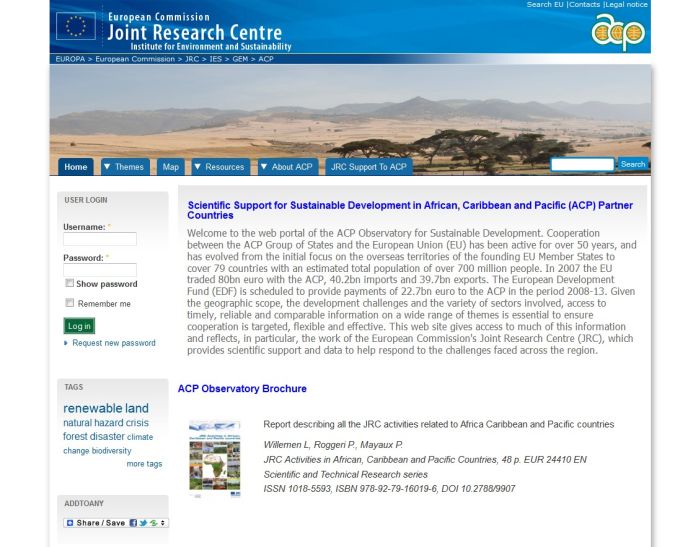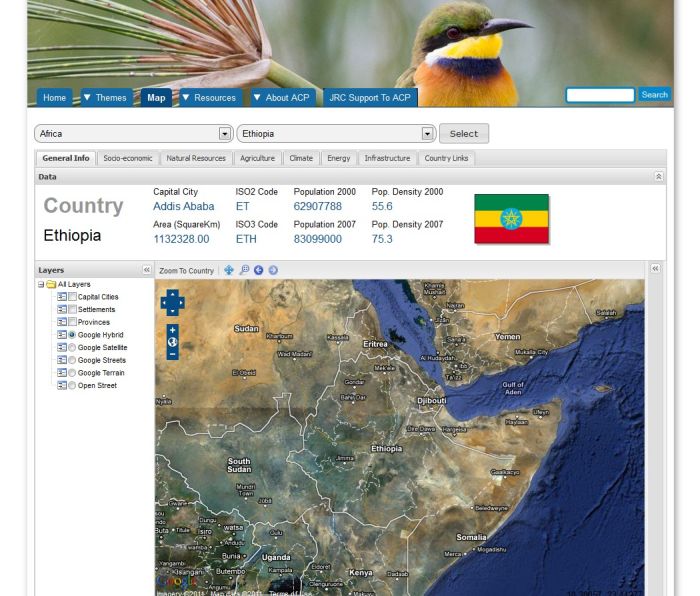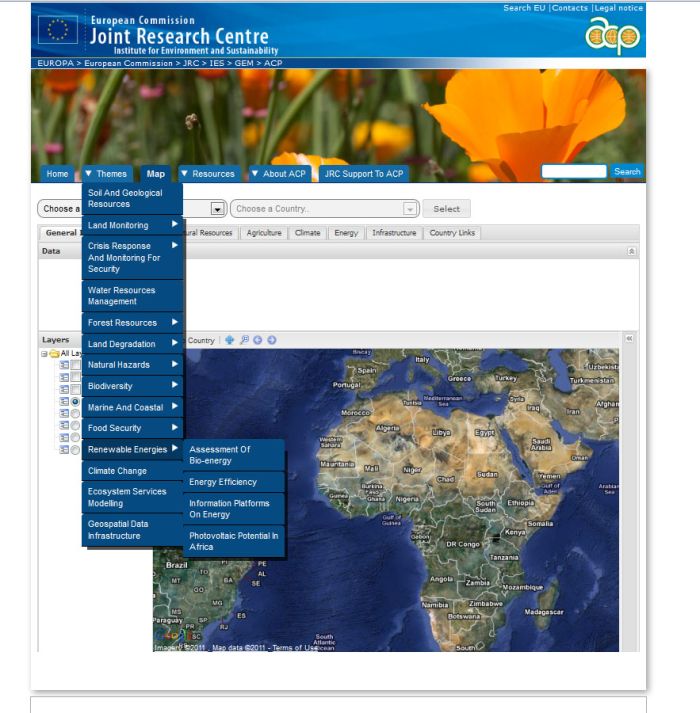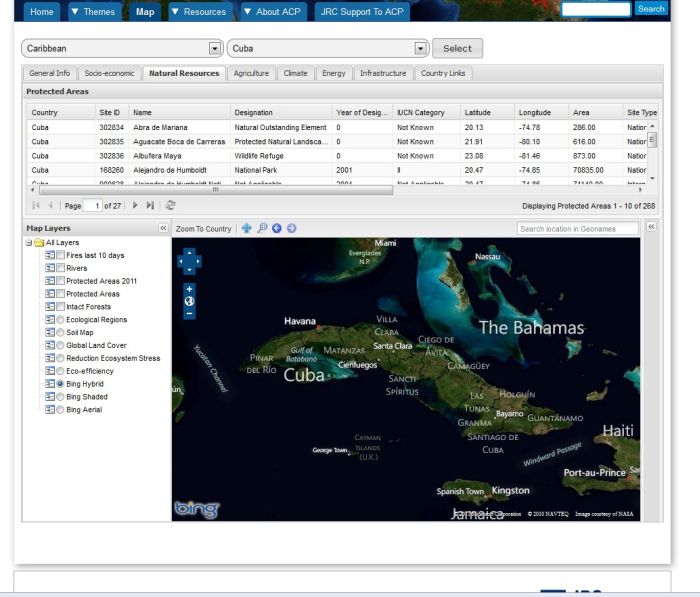Sustainable management of natural resources ACP countries
Joint Research Center - European Commission
According to the United Nations, at least 17% of the Earth’s surface waters and 10% of coastal and marine areas should be protected. The current 13 000 protected areas are insufficient to ensure the survival of the Earth’s biodiversity. EU development policy can play a role in protecting biodiversity. To be able to properly define, target, implement and evaluate development aid strategies and programmes related to natural resource protection, EU policymakers need dynamic information on the location, condition and evolution of environmental resources and on crisis situations. Freshwater, aquaculture, fisheries, biodiversity, forests, and agricultural land have high economic and social value throughout the Africa, Caribbean and Pacific (ACP) region; but they can also be over-exploited, with damaging consequences for local economies, long term stability and for the Earth system as a whole – especially the climate system. The ACP’s fast-growing population puts growing pressure on the environment to provide food, water and fibre, on the regions’ urban centres and transport networks, and on energy sources.

Information on the location, condition and evolution of resources is an important step towards sustainability, but unfortunately such information can be hard to get. Earth observing satellite technology combined with geographical information management can help fill the information gap. In this objective, and because of its unique position to support the implementation of advanced interoperable geospatial technologies, the Joint Research Centre (JRC) of the European Commission (EC) is setting-up of an “Observatory for sustainable development” as single portal to support decision-making for development in the fields of natural resource and food security.


The African Union and European Union recognise the importance of this service and are beginning to develop this capacity as part of the AU EU joint strategic partner-ship. This paper describes the needs, and presents the first steps taken by the JRC and by the joint partnership in harnessing space technologies to help meet Millennium Development Goals, in particular eradication of poverty, and environmental sustainability The main role of the JRC is to provide the tools for monitoring ecosystems and agro-systems, and to contribute to the understanding of the interactions between development, environment, and security issues. It fulfils this role by engaging in near-real-time monitoring activities using satellite data and dedicated geospatial knowledge management systems. The main objectives of the JRC in this area are to document the quality of high-biodiversity regions, assess the level of threats from human activities (such as agriculture, logging and fires) and set up an operational structure and reporting tools for the ACP Observatory for Sustainable Development.
